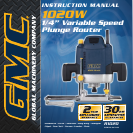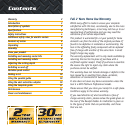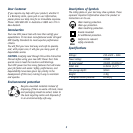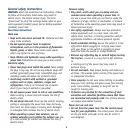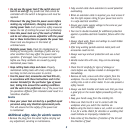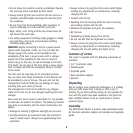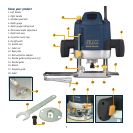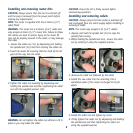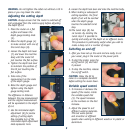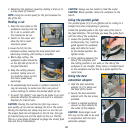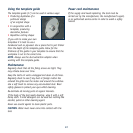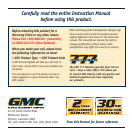
WARNING. Do not tighten the collet nut without a bit in
place or you may break the collet.
Adjusting the cutting depth
CAUTION. Always ensure that the router is switched off
and unplugged from the mains supply before adjusting
the depth of cut.
1. Place the router on a flat
surface and loosen the
depth gauge locking knob
(5).
2. Allow the depth gauge (4)
to make contact with one of
the turret stops (8).
3. Loosen the depth lock lever
(7) and lower the machine
body until the router bit
just touches the flat surface.
4. Tighten the depth lock lever
to maintain the position of
the bit just touching the
flat surface.
5. Take note of the
measurement on the scale
of the depth gauge.
6. Raise the depth gauge and
tighten using the depth
gauge locking knob.
The difference in distance
between the new measurement
and the original measurement
will be equivalent to the depth
of cut.
7.
Use the micrometer depth
adjustment (6) for precise
setting of cutting depth.
One complete turn of the
micrometer depth adjustment
knob represents 1mm.
8. L
oosen the depth lock lever and raise the machine body.
9. When making a subsequent
cutting operation, the final
depth of cut will be reached
when the depth gauge
touches the selected turret
stop.
10. The turret stop (8) has
six turrets. By rotating the
turret stop it is possible to
quickly and easily set the depth at six different levels.
This procedure is particularly useful when you wish to
make a deep cut in a number of stages.
Switching on and off
1. After you have set up the work and are ready to cut
your wood, plug in the router at the power point.
2. To start the motor, press the
on/off switch (9) and hold
it pressed.
3. To stop the machine, release
the on/off switch.
CAUTION. Allow the bit to
come to a complete standstill
before setting the router down.
Variable speed control
1. To increase or decrease the
speed of the router, rotate
the variable speed dial
(3). The speed increases
as the numbers on the dial
increase.
2. Adjust the speed to suit
different working materials.
The tool works quicker
and smoother at different
speeds when working in different woods or in plastic or
aluminium.
9



